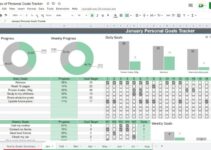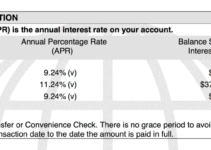Welcome to Personal Finance Kids 2024, where we dive into the fascinating world of financial literacy for the young minds of today. In an era defined by rapid technological advancements and shifting economic landscapes, equipping children with a solid understanding of personal finance has become more crucial than ever before.
This comprehensive guide will navigate you through the essential aspects of financial literacy for kids, empowering you with the knowledge and tools to foster their financial well-being.
Financial Literacy for Kids in 2024: Personal Finance Kids 2024
In today’s rapidly evolving financial landscape, financial literacy has become an essential life skill for individuals of all ages, including children. With the advent of digital banking, cryptocurrency, and complex investment options, it is imperative for kids to develop a strong foundation in financial concepts to navigate these complexities effectively.Financial
literacy empowers children with the knowledge and skills necessary to make informed financial decisions, manage their money wisely, and plan for their future. By understanding basic concepts such as budgeting, saving, investing, and credit, kids can lay the groundwork for financial success and well-being throughout their lives.
Emerging Trends and Challenges
Teaching financial literacy to kids in 2024 presents both opportunities and challenges. On one hand, technology offers innovative ways to engage children in learning about finance. Gamified apps, interactive simulations, and online platforms make financial education more accessible and fun.However,
the sheer volume of financial information available online can also be overwhelming. It is crucial for parents, educators, and financial institutions to provide age-appropriate, reliable resources and guidance to help kids navigate this information overload.
Innovative Programs and Initiatives
Recognizing the importance of financial literacy, many organizations are developing innovative programs and initiatives to enhance financial education among children. For example, the Jump$tart Coalition for Personal Financial Literacy offers age-specific curricula and resources for educators and parents. The American Bankers Association’s Get Smart About Credit program provides interactive games and activities to teach kids about credit and responsible borrowing.These
initiatives play a vital role in fostering financial literacy among the younger generation, equipping them with the skills and knowledge they need to make informed financial decisions throughout their lives.
Saving and Budgeting for Young Learners

Inculcating the values of saving and budgeting in children is crucial for their future financial well-being. Here’s a step-by-step guide to help young learners understand these concepts.
Introducing the Concept of Saving
Explain that saving involves setting aside a portion of money for future use, emphasizing its importance for achieving financial goals and handling unexpected expenses.
Setting Financial Goals
- Encourage children to identify their financial aspirations, such as saving for a toy or a trip.
- Guide them in setting realistic and achievable goals by considering their income and expenses.
Creating a Budget
Introduce budgeting as a plan for managing income and expenses. Discuss the importance of tracking income and expenses to make informed decisions about spending.
Practical Tips for Tracking Expenses
- Provide children with a simple notebook or app for recording their income and expenses.
- Encourage them to categorize their expenses, such as entertainment, food, and clothing.
- Set up a system for regular expense review, allowing them to identify areas where they can save.
Creative Ways to Engage Kids in Saving
- Create a “Savings Jar” where they can physically see their savings grow.
- Organize a “Saving Challenge” with rewards for meeting saving goals.
- Involve children in family budgeting discussions to foster a sense of responsibility.
Investing for the Future
Investing is like planting a seed that grows into a big tree over time. When you invest, you use your money to buy something that can increase in value, like stocks or bonds. This way, your money can grow faster than if you just kept it in a savings account.
It’s never too early to start investing. The sooner you start, the more time your money has to grow. Even if you only invest a little bit each month, it can add up to a lot over time.
Types of Investments for Kids
There are many different ways to invest, but some of the most common options for kids are:
- Savings accounts:Savings accounts are a safe place to keep your money, and they usually earn a small amount of interest. This means that your money will grow slowly over time.
- Stocks:Stocks are shares of ownership in a company. When you buy a stock, you are essentially buying a small piece of that company. If the company does well, the value of your stock will go up. However, if the company does poorly, the value of your stock could go down.
- Mutual funds:Mutual funds are a type of investment that pools money from many investors to buy a variety of stocks and bonds. This diversification helps to reduce the risk of losing money, but it also means that your returns may not be as high as if you invested in a single stock.
| Investment | Risk | Return | Liquidity |
|---|---|---|---|
| Savings accounts | Low | Low | High |
| Stocks | High | High | Low |
| Mutual funds | Medium | Medium | Medium |
Responsible Spending and Consumerism

In today’s consumer-driven society, teaching children responsible spending is crucial. Responsible spending involves making thoughtful and informed decisions about purchases, considering both needs and wants, and avoiding impulsive spending.
To instill responsible spending habits, parents and educators can employ several strategies. One key approach is to encourage mindful spending by discussing the value of money, setting spending limits, and involving children in budgeting processes.
Tips for Teaching Mindful Spending
- Discuss the concept of needs versus wants, emphasizing the importance of prioritizing essential expenses over non-essential ones.
- Establish clear spending limits for children, allowing them to make small purchases within those limits.
- Involve children in budgeting exercises, showing them how to allocate funds for different categories, such as savings, expenses, and discretionary spending.
- Encourage children to research and compare prices before making purchases, fostering informed decision-making.
- Teach children the concept of delayed gratification, explaining the benefits of saving for larger purchases rather than making impulsive buys.
Financial Education in Schools
Financial literacy is essential for kids’ future financial well-being. Schools play a crucial role in providing financial education, equipping students with the knowledge and skills to make sound financial decisions.Integrating financial literacy into school curricula offers numerous benefits. It empowers students to manage their finances responsibly, avoid debt, and plan for their financial future.
Best practices include incorporating real-life scenarios, hands-on activities, and engaging resources to make learning interactive and relatable.
Challenges in Implementing Financial Education
Despite its importance, integrating financial literacy into school curricula faces challenges. Time constraints, limited resources, and lack of teacher training can hinder effective implementation. Additionally, varying state and national standards can create disparities in the quality and depth of financial education offered.
Successful Financial Education Programs
Several successful financial education programs have been implemented in schools. The Jump$tart Coalition for Personal Financial Literacy provides resources and training for educators. The National Endowment for Financial Education offers programs like “MoneySKILL” and “Practical Money Skills for Life” to teach students about budgeting, saving, and investing.By
addressing these challenges and implementing best practices, schools can effectively equip students with the financial literacy skills they need to succeed in the future.
Technology and Financial Literacy
The digital age has brought about significant advancements in the way we learn and interact with financial concepts. Technology has emerged as a powerful tool in enhancing financial literacy among kids, offering numerous advantages and potential risks.
Advantages of Technology for Financial Literacy
-
-*Interactive Learning
Digital platforms provide interactive games, simulations, and videos that make learning financial concepts engaging and enjoyable for kids.
-*Accessibility
Online resources and mobile apps offer easy access to financial information and educational content, regardless of location or time constraints.
-*Personalized Learning
Technology allows for personalized learning experiences tailored to individual needs and learning styles.
Disadvantages of Technology for Financial Literacy
-
-*Screen Time Concerns
Excessive screen time can lead to reduced physical activity and social interaction.
-*Information Overload
The vast amount of financial information available online can be overwhelming and confusing for kids.
-*Security Risks
Online financial transactions and data sharing pose potential risks for identity theft and fraud.
Guidelines for Safe and Responsible Use of Technology in Financial Education, Personal Finance Kids 2024
-
-*Parental Supervision
Parents should monitor children’s online activities and guide them in using technology responsibly.
-*Age-Appropriate Content
Choose age-appropriate resources that are tailored to the child’s developmental level and financial literacy needs.
-*Privacy and Security
Educate kids about online safety, password protection, and the importance of safeguarding personal information.
By leveraging the advantages of technology while mitigating potential risks, we can empower kids with the financial literacy skills they need to thrive in the 21st century.
Parental Involvement in Financial Education
Financial literacy is a crucial life skill that children should start learning at an early age. Parents play a vital role in fostering financial literacy among their children by providing guidance, support, and hands-on experiences.Engaging children in financial discussions and activities helps them understand the value of money, budgeting, saving, and investing.
Parents can start by introducing basic concepts like the difference between needs and wants, how to track expenses, and the importance of setting financial goals.
Tips for Parents
- Talk openly about money with your children. Discuss your family’s budget, saving goals, and financial decisions.
- Encourage your children to participate in household financial activities, such as grocery shopping, paying bills, or managing a small allowance.
- Use everyday situations as teaching moments. Explain how you make financial decisions, such as when you decide to save for a vacation or invest in a new car.
- Provide hands-on experiences, such as setting up a savings account or investing in a simple stock.
- Be patient and supportive. It takes time for children to learn about financial concepts. Encourage their questions and celebrate their progress.
Resources and Support Groups
There are many resources and support groups available for parents seeking guidance on teaching financial literacy to their children.
- National Endowment for Financial Education (NEFE): NEFE provides free financial education resources and programs for children and families.
- Jump$tart Coalition for Personal Financial Literacy: Jump$tart offers a variety of resources and programs to help parents teach financial literacy to their children.
- Financial Literacy and Education Commission (FLEC): FLEC provides resources and support to help parents and educators promote financial literacy.
By actively engaging in their children’s financial education, parents can help them develop the knowledge and skills they need to make sound financial decisions throughout their lives.
Final Conclusion
As we conclude our exploration of Personal Finance Kids 2024, remember that financial literacy is a lifelong journey. By instilling these principles in children at an early age, we are setting them on a path towards financial success and empowering them to make informed decisions throughout their lives.
FAQ
What is the significance of financial literacy for kids?
Financial literacy empowers children to make informed financial decisions, manage their money effectively, and plan for their future financial well-being.
How can I teach my child about saving and budgeting?
Introduce the concepts of saving and budgeting through practical activities, such as setting up a piggy bank or creating a simple budget plan together.
Why is it important to start investing early?
Early investing allows children to take advantage of compound interest and potentially grow their wealth over time.
How can I promote responsible spending habits in my child?
Teach your child the difference between needs and wants, encourage them to compare prices before making purchases, and set limits on their spending.








